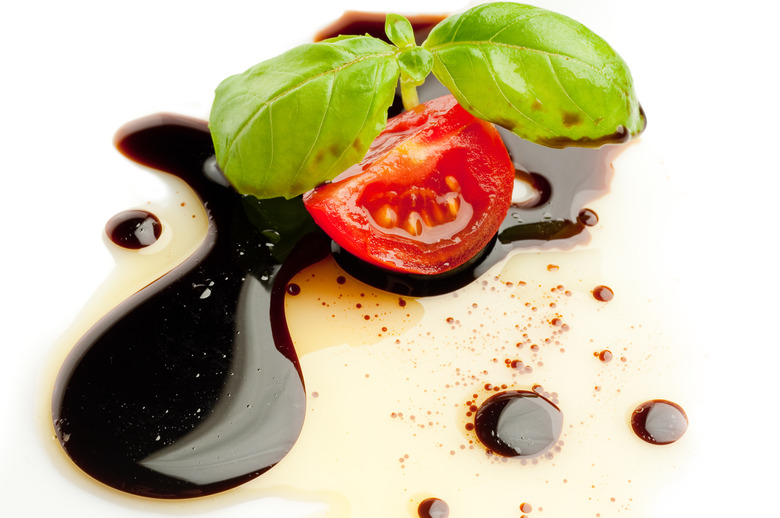How To Separate Oil & Water Layers
Pour some balsamic vinegar on a plate, add a bit of olive oil and the oil will float on top of the vinegar in a greenish puddle. The reason they don't mix is that vinegar is mostly water while olive oil is – well – oil, and everyone knows oil and water don't mix. If you want to retrieve the olive oil from the vinegar, you might be able to get most of it carefully with a piece of bread, but it's going to be difficult to avoid also getting some of the vinegar. You probably won't get all the oil, either, because some of it remains in the vinegar as an emulsion. The same principles apply during a cleanup after an oil spill.
It's All About the Molecules
It's All About the Molecules
The water molecule is polar, which means it carries a small electrical charge. The charge is created by the arrangement of the hydrogen atoms on the oxygen atom. Substances that dissolve in water also have polar molecules that can break apart when attracted to water molecules. The water molecules surround these polar molecules, and the substance disperses in solution. Oil molecules are not polar, so this process doesn't happen when you add oil to water. Instead, the oil remains intact and, because it's lighter than water, it floats to the surface and forms a film there.
Give Gravity Time to Work
Give Gravity Time to Work
If you pour oil into water, the easiest way to separate the two liquids into layers is to let gravity do it for you. When the oil is introduced, it may fall below the water surface, but in the absence of turbulence, it will eventually rise to the surface. This is because, at most temperatures, most oils have a density that is lower than that of water. In simpler terms, oil rises because it's lighter than water. Because this is true, the main technique workers use to remove oil after an oil spill is skimming. They use various tools to physically remove the surface layer of oil.
Freeze the Water
Freeze the Water
Removing all the oil from seawater is a procedure as imprecise as getting all the olive oil out of your balsamic vinegar. The action of skimming emulsifies some of the oil, which means it separates it into small droplets that disperse in the water. Oil spill remediation workers capitalize on this by adding dispersants or biological agents to the oil they can't remove and allowing the treated oil to become part of the ocean ecosystem. If you have an oil/water mixture in a container, however, you can use a trick to get virtually all of the oil. That trick is simple: Freeze the water.
If you lower the temperature to freeze the water, the oil will collect in a layer at the bottom or top of the ice cube you've created, depending on the density of the oil in relation to that of ice, which is less dense than water. You can now skim or wipe the oil from the surface of the ice. If the oil is heavier than ice, you can remove the ice and pour the oil from the bottom of the container. This technique works even if you lower the temperature enough to freeze the oil, although you'll have to chip the oil rather than skim, wipe or pour it.
Cite This Article
MLA
Deziel, Chris. "How To Separate Oil & Water Layers" sciencing.com, https://www.sciencing.com/separate-oil-water-layers-7807795/. 26 April 2018.
APA
Deziel, Chris. (2018, April 26). How To Separate Oil & Water Layers. sciencing.com. Retrieved from https://www.sciencing.com/separate-oil-water-layers-7807795/
Chicago
Deziel, Chris. How To Separate Oil & Water Layers last modified March 24, 2022. https://www.sciencing.com/separate-oil-water-layers-7807795/
